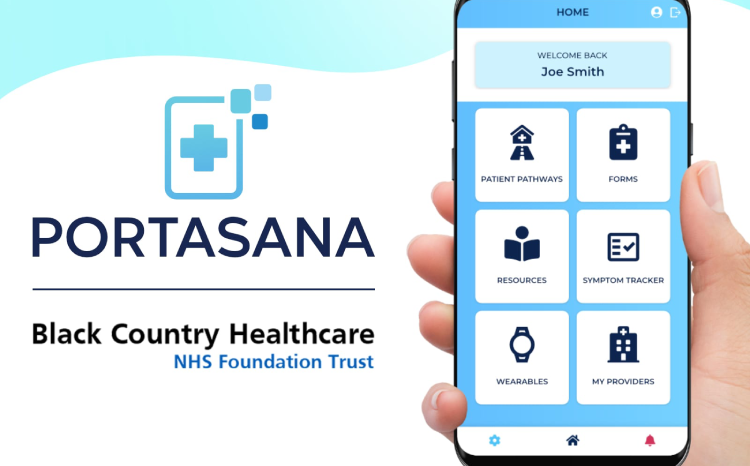Digital jam for NHS providers a welcome start
- 30 August 2018

The news that the 80% of NHS providers not part of the flagship global digital exemplar (GDE) programme will receive long-promised national investment to support digitisation is very welcome.
Two years on from the publication of the Wachter Review, those English providers not selected as either GDEs or fast followers – the vast majority – have been told that they will get a dollop of jam under the Health System Led Investment Programme (HSLI).
But while the total pot is £412.5m, it will be spread thinly. It must be shared across the 44 sustainability and transformation partnerships (STPs) over three years, with cash allocated on a capitation basis.
The money is also back-ended: a quarter this year, a quarter next and nearly half in 2021/22.
Spreading it thin
Significantly, the total sum covered by HLSI is broadly comparable to that being spent on the much smaller number of GDEs and fast followers, who were promised £385m from the £1.3 billion ‘Paperless 2020’ fund first pledged by former health secretary Jeremy Hunt in 2015.
Each of the 16 acute GDEs is receiving £10m of national investment, with their 16 fast followers £5m each. In addition, the seven mental health GDEs are getting £5m each. The three ambulance GDEs are sharing £5m between themselves.
Assume a straight spilt of the £412.5m across the 44 STPs (some of which have now evolved into integrated care systems) and each can expect to receive about £9m over three years, which will have to be match-funded locally. That means an entire STP, within which several providers may sit, will have to share slightly less than the money allocated to one acute provider GDE.
So the programme represents a relatively modest level of investment – particularly after two lean years waiting for cash – and realistically is only going to enable limited local digital transformation plans.
The HLSI prospectus advises that providers must prioritise initiatives including EPR roll-outs. With an average hospital trust EPR project weighing in at around £10m over 10 years, though far more if a trust decides it needs to pick a premium brand, the levels of investment available locally will help incremental improvements but not enable systemic transformation.
Other priority areas include local integrated care records and other measures to improve data sharing between organisations. Additional investment may have a more immediate impact here.
The new GDE wave
Perhaps just as important as the new money is the formalisation of some key principles of NHS England’s NHS IT policy. Many of the principles in the HSLI prospectus have previously been signalled in speeches by Matthew Swindells, NHS England’s national director operations and information, but the document serves to formalise them.
Strikingly, the prospectus makes clear that the intended direction of travel is based on further waves of GDEs and fast followers.
To date, the GDE and fast follower programmes have unfortunately accelerated the development of a two-tier NHS on digital. While the trusts included in the programmes have been prioritised for investment and policy attention, the 80% of organisations outside the gilded circle have received scant attention over the past two years.
The latest edition of the NHS IT Leadership survey by Digital Health Intelligence indicates that the GDE and fast follower programmes have entrenched the divide between digital have and have nots.
Over 80% of respondents to the 2018 survey said they did not think that the GDE/FF programmes were benefitting the NHS as a whole.
So a key challenge remains to make the GDE programme relevant and offer benefit for all NHS providers not just the few, and to create a genuinely effective bridge between the two groups of trusts.
The idea of blueprints has potential but remains at a very early stage and will not deliver benefits unless plans are backed by very significant new investment.
A standard line
One of the other key themes of the document is the standardisation of systems, which has been a central tenet of the GDE programmes.
Such standardisation of systems has been a touchstone of NHS IT policy since the early 2000s, and an article of faith throughout the National Programme for IT era, during which Cerner’s Millennium and iSoft’s Lorenzo were the two hospital systems selected nationally for trusts to standardise on.
Sixteen years on, the HLIS prospectus says that STPs will be expected drive standardisation of systems across local providers: “Specifically, EPR divergence in a local healthcare system will not be supported.”
And though the prospectus doesn’t indicate criteria that should be used to determine what systems should be standardised on, the direction of travel is surely set by the suppliers that feature in GDE and fast follower organisations.
The continued focus of standardisation is partly justified to support interoperability but does not guarantee it.
Achieving interoperability, common standards and open interfaces has proved frustratingly slow in the English primary care systems market, despite a very high degree of standardisation of systems. Reducing competition has an all too predictable impact on competition and innovation.
And in his 2016 report on lessons that NHS IT should learn from the recent US experience of digitisation, Dr Bob Wachter said it was crucial that interoperability must be baked in at every level from the outset when implementing electronic records, not be left as a future problem to solve.





3 Comments
Hello Mark, the blueprints are being published already, see this site https://future.nhs.uk/connect.ti and join the “Global Digital Exemplar Community” on there.
BW
Hi NHSally – I followed the link and I’m not sure you can say they’ve been published when they’ve been stuck on an invitation-only portal – not exactly easy to find
Why not also publish them on Digital Health Networks, the biggest and most active online community of UK health IT leaders?
We’d be happy to help make them much more widely available to folks who might be interested in the Blueprints by also publishing on digitalhealth.net and in the new public part of Digital Health Networks.
Should the GDEs & FFs not have to agree and deliver a plan before they receive their money, like the Sustainability & Transformation fund?
One of the requirements of each plan should be to publish their blueprints on NHS Digital’s website so they can be easily accessed by the rest of the NHS.
Would love to see them how many have been created to date and if they can be re-used by others (or are too Trust specific).
Comments are closed.